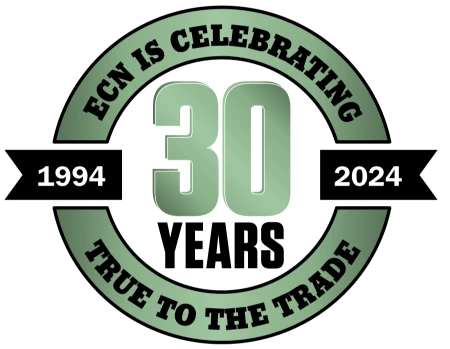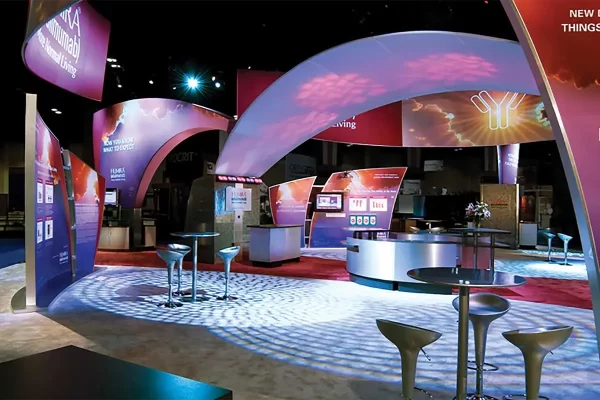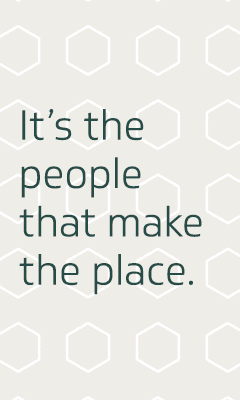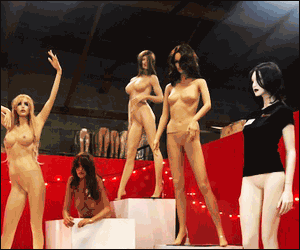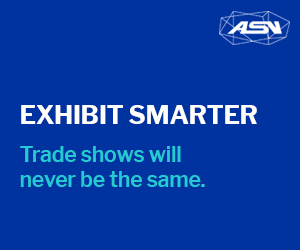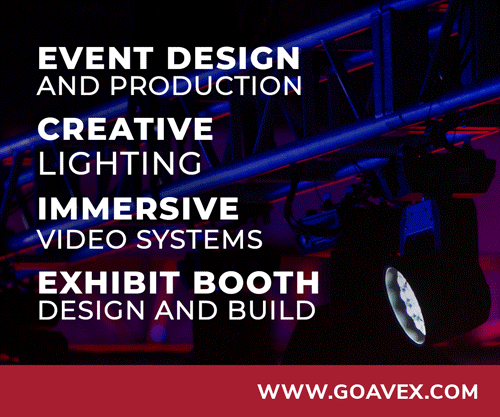by Larry Kulchawik
When the industry came to a screeching halt due to COVID, the world of business created ways to communicate. Zoom and other digital means became the new tool to exchange ideas face-to-face. The convention industry experimented with virtual events with minimal success. One thing that was learned: there is no substitute for human contact. Face-to-face contact unleashes emotion in a way that digitalization does not. This being said, the industry learned to embrace some new digital alternatives that created a few new tactics to reach people beyond the tradeshow floor.
Over the past 50 years, world circumstances, technology, and new building materials have pushed the exhibit industry to change its ways of doing things. While all were face-to-face, each decade developed different ways of exhibiting, for effciency and cost.
Starting with the street vendors in Persia to the World Fairs, the concept of tradeshows evolved. Unlike a World Fair, tradeshows evolved to be industry specific. They became an effective way to introduce a new product to a knowing audience within a given trade industry.
Many tradeshows started with an industry association who selected a city facility to organize an event and had companies acquire an exhibit space to introduce their products. The organizer would hire a show contractor to prepare the show floor, manage the event, and assist exhibitors with their displays.
Over time, exhibitors wanted more than the basic exhibit choices offered by the show contractor, so exhibitors began to hire outside exhibit designers to build their stands. Many would ship in lumber, build a stand on site, paint, and apply hand drawn graphics. In time, decorator companies were formed in the cities where the first tradeshows were held. Cities like New York, Chicago, Detroit, San Francisco, and others transformed their hotels and old buildings to conduct tradeshow events. Exhibit design companies began to form to help exhibitors improve their image. Exhibit houses were usually owned by carpenters, sign painters, or decorators with an entrepreneurial spirit. Many exhibit houses then began to open outside of the major cities where the shows were held. Their customers were major corporations who exhibited at shows and built a custom exhibit to ship to the show. Wolla! The exhibit houses were born.
There were many tradeshows organized in the early 1900s. Then events came to a screeching halt with World War II. The concept of industry tradeshows picked up strong after the war and rapidly grew from there. Each time there was world conflict or economic downturn the exhibiting methods changed. Technology played a key role in the fabrication methods for tradeshow exhibits each decade. The exhibit created an image for a company and a way to show their products. In time, the exhibit needed to do more for the exhibitors.
In the early 60’s, there were many exhibit companies in business. The EDPA association for exhibit design firms was formed to share exhibiting and business knowledge nationwide. EDPA was formed in 1956 with Norm Hadley from Hadley Display in Buffalo, NY serving as the first president. Good ideas were copied and modified.
1960-1970: Industry Expansions with Trade Fairs
During this period most tradeshows were held in a colosseum or in hotels. Exhibit houses were beginning to grow and most exhibits were fabricated from wood and crated for shipment. Weight was not a factor. Most were a 20’ to 30’ x 8’ high in-line designs and used back lighted transparencies for graphics. Lighted with ball lights. The floor was covered in vinyl tiles. Wood paneling, slat walls, and painted box frame panels were a popular backwall. The exhibitors were mainly men and all attendees dressed in suits and there were few women who attended, except at the nurses show in Washington DC. The major attraction was to introduce new products and to make personal contacts. Large shows were attracted to the New York Coliseum, the original McCormick Place, and Cobo Hall in Detroit. Both opened in 1960 to jump start the auto shows. Other popular tradeshow cities in the 60’s were New York Madison Square Garden, Public Auditorium in Cleveland, LA Convention Center, and the Atlantic City Hall in NJ.
1970-1980: Industry Convention Parties
Tradeshows were picking up steam in popularity and were looked at by many as an industry party. The Housewares Show, the Hardware Show, and CES were the place to be to make contacts, hire reps, and show your products. McCormick Place was a leading location.
During the shows, everyone dressed in suits, smoked, and drank more than usual.
The exhibits continued to be fabricated from wood. Graphics were produced with silk screening and colored films. Prefabricated light boxes and ball lights were the main reason to order electric, until slide projectors and TV’s began to be incorporated in the exhibit design. Aluminum exhibit systems were also creeping their way in as a frame to support a wall panel. Many complained that systems were too flimsy and would never be accepted in the USA. Technology was unfolding: first digital camera in 1975, Kodak; Walkman 1979, Sony; Floppy Disc 1971, IBM; first cell phone 1973, Motorola; Betamax 1975, Sony; Mac computer 1984, Apple. This all influenced how businesses operated.
1980-1990: The Go-Go Years!
Venues in all major U.S. cities were being built exclusively for tradeshows. City governments were willing to invest to build a center and attract business to their cities. McCormick expansion, Las Vegas, San Francisco, Atlanta, Dallas, New York, New Orleans, Los Angeles and a number of other convention centers were built to compete with other venue locations. The Orange County Convention Center in Orlando was built in 1983 and was just getting popular. Many new shows began to unfold. Nat’l Computer Conference/NY, Semicon/SF, Comdex/LV, SCTE Cable Expo, ICSC/LV. New shows were created as an extension of many shows getting too diverse.
The “Casual Friday’ dress code at many corporations influenced exhibitors to wear golf shirts with a logo as their uniforms. Visitors also stopped wearing a suit to a show.
With so many shows, exhibit houses were managing their customers exhibit program, and not just a single show. Many houses specialized in particular industries. New materials to design an exhibit created a wide variety of creative solutions for exhibit design. Materials like tambour, sintra, aluminum systems, fabric, vinyl graphics, and paint applications like Zolatone gave exhibit designers a new palette to design from. Exhibit houses no longer provided all things in house. So many components were purchased on the outside creating an explosion of new companies who specialized in providing a single exhibit service. Companies were formed to exclusively provide carpet, graphics, furniture, shipping, lighting, fabric, AV, light boxes, double deckers, and I&D services.
Exhibit builders were no longer carpenters, but assemblers of components. For each installation, exhibit houses would send an exclusive supervisor for the set up using an independent I&D labor company or the show contractor labor. Arranging exhibit services was a time consuming task for the exhibitors. Exhibit houses provided this added service. Loyal partnerships were created between the exhibit manager and exhibit company team.
This article has been split in two, for the second half please check back Monday. This story originally appeared in the Q2 2024 issue of Exhibit City News, p. 80. For original layout or to read the full story, visit https://issuu.com/exhibitcitynews/docs/ecn_q1_2024.





